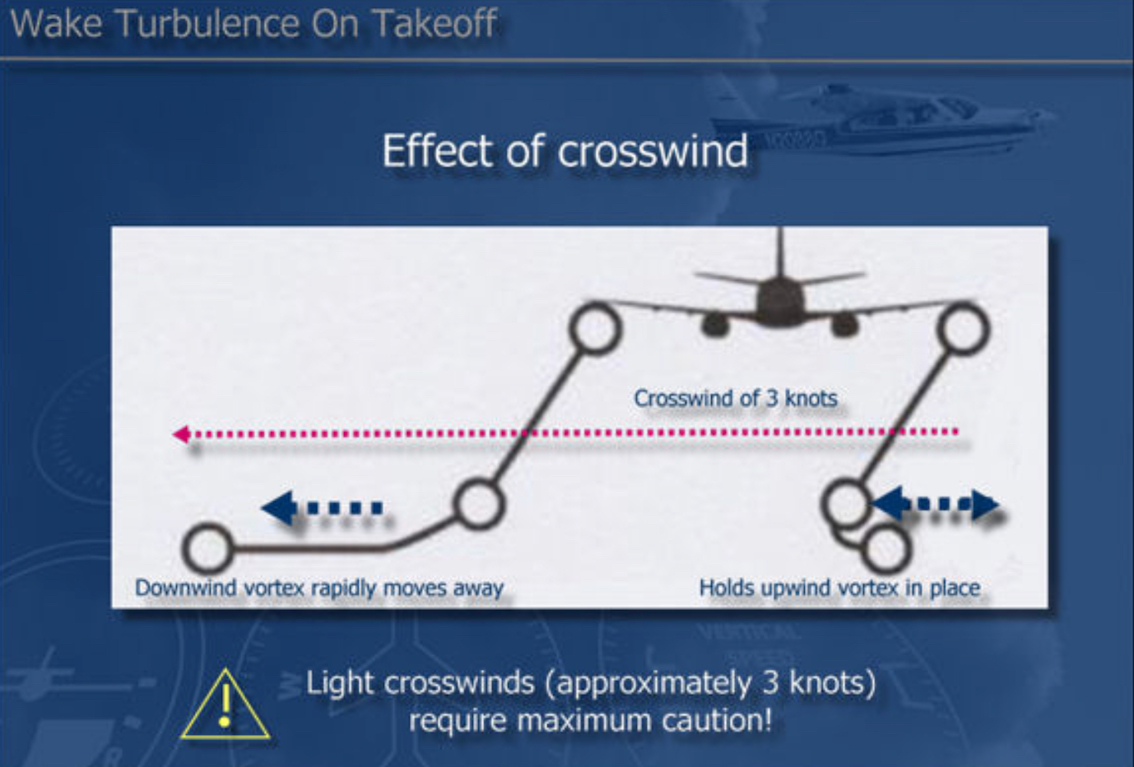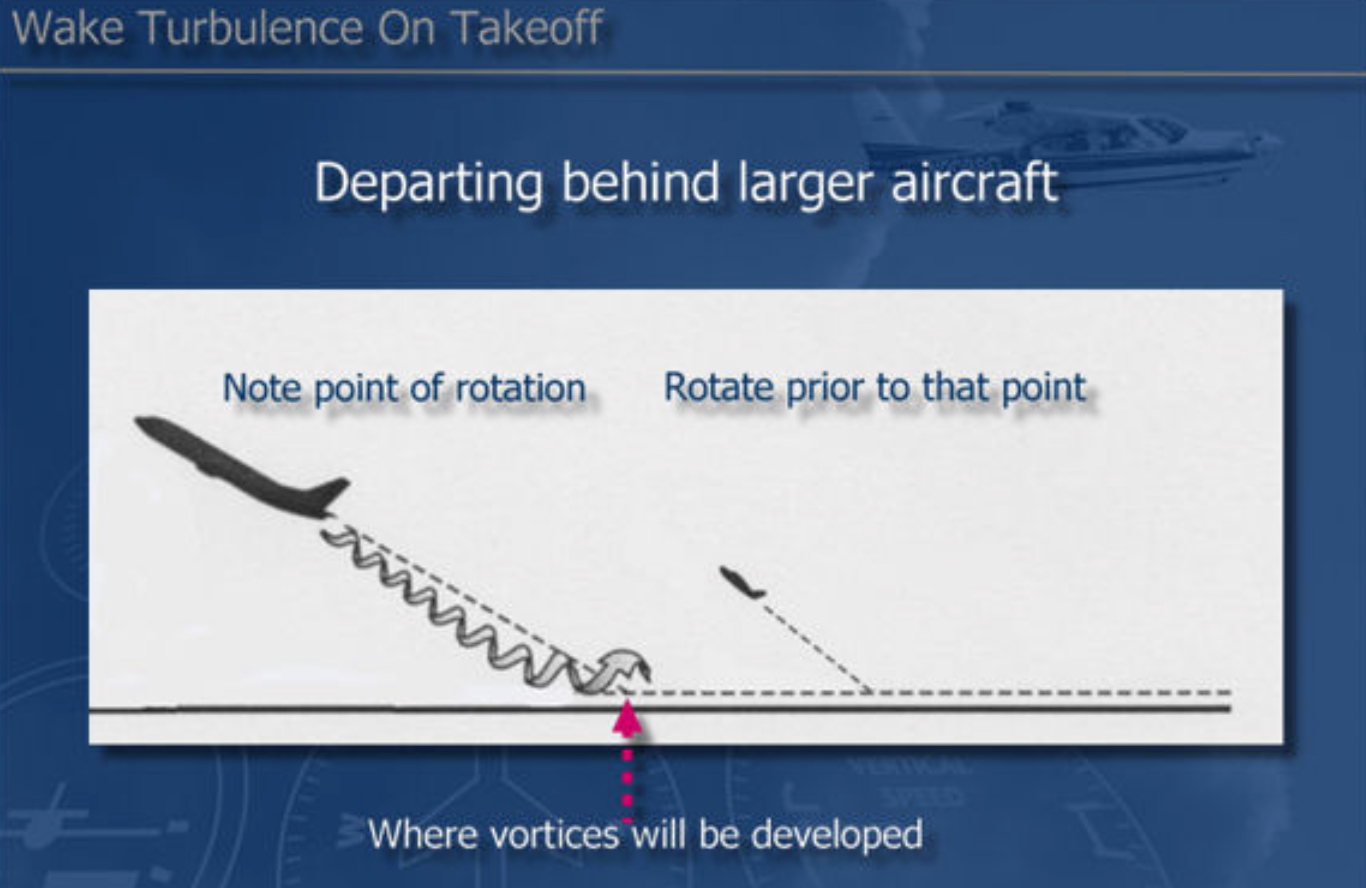 A short while ago, I published an item about the disastrous effects of taking off too soon behind a heavier aircraft – ‘The dangers of wake turbulence‘
A short while ago, I published an item about the disastrous effects of taking off too soon behind a heavier aircraft – ‘The dangers of wake turbulence‘
In that article, the advice was simple – bide your time and wait at least 2 minutes before taking off after a heavier aircraft. But here’s a bit more detailed advice from CFI Bob Nardiello, who has over 12,000 hours of flight experience (including 8,000+ hours of instruction). Bob was 2004 Flight Instructor of the Year and 2006 FAA Safety Counselor of the Year.
His advice on wake turbulence take-offs:
“Vortices tend to move outward from the aircraft. So if you are behind a departing aircraft, the vortex from the right wing will tend to move to the right and the vortex from the left wing will tend to move to the left – in nil wind conditions.
If there is a crosswind, the wind will influence the movement of the vortices. A crosswind of about 3 knots will hold the upwind vortex pretty much in place on the runway where it was created, while the downwind vortex will move rapidly away from the runway.
 Crosswinds greater than about 5 knots will tend to break up the vortices fairly quickly. So stronger crosswinds are good things, as far as vortices are concerned – we want the vortices to break up and decay as soon as possible. So light crosswinds around 3 knots and under require maximum caution.
Crosswinds greater than about 5 knots will tend to break up the vortices fairly quickly. So stronger crosswinds are good things, as far as vortices are concerned – we want the vortices to break up and decay as soon as possible. So light crosswinds around 3 knots and under require maximum caution.
We also need to note the lift-off point of the previous aircraft. That point is where the vortices will be developed. From that point on, there will be vortices off the wings of that departing aircraft. So it’s important that your take-off point occurs before the take-off point of the preceding aircraft. You DO NOT want to be taking off into the vortices of the preceding aircraft!
You need to climb on the upwind side of the departing aircraft to avoid the crosswind effect of the vortices. So if the crosswind will move the vortices to the left, your departure path should be to the right to avoid those vortices.”
So next time you’re taking off behind another aircraft, particularly a heavier one:
– WAIT!
– lift off well before the take-off point of the preceding aircraft; if you can’t be sure to do this, WAIT!
– when you do take-off try to track to the upwind side of the earlier aircraft’s track.
Safe flying!
